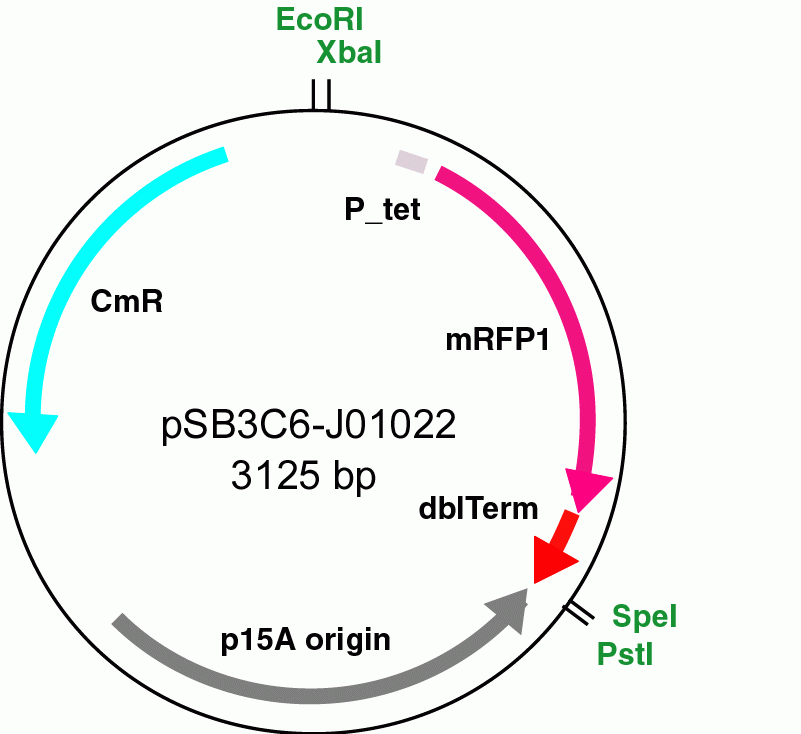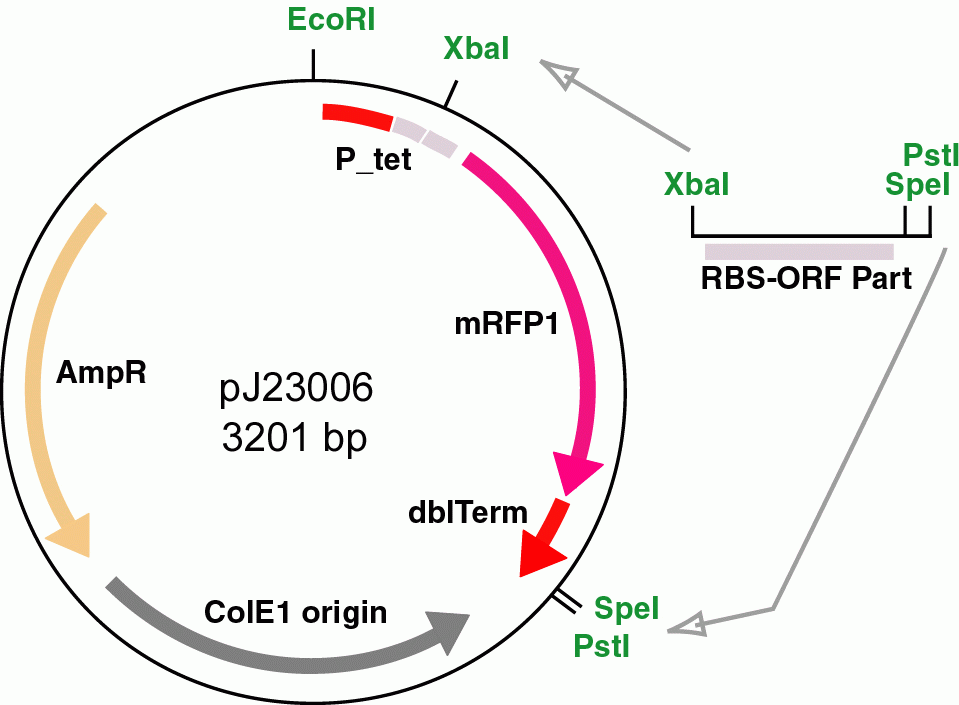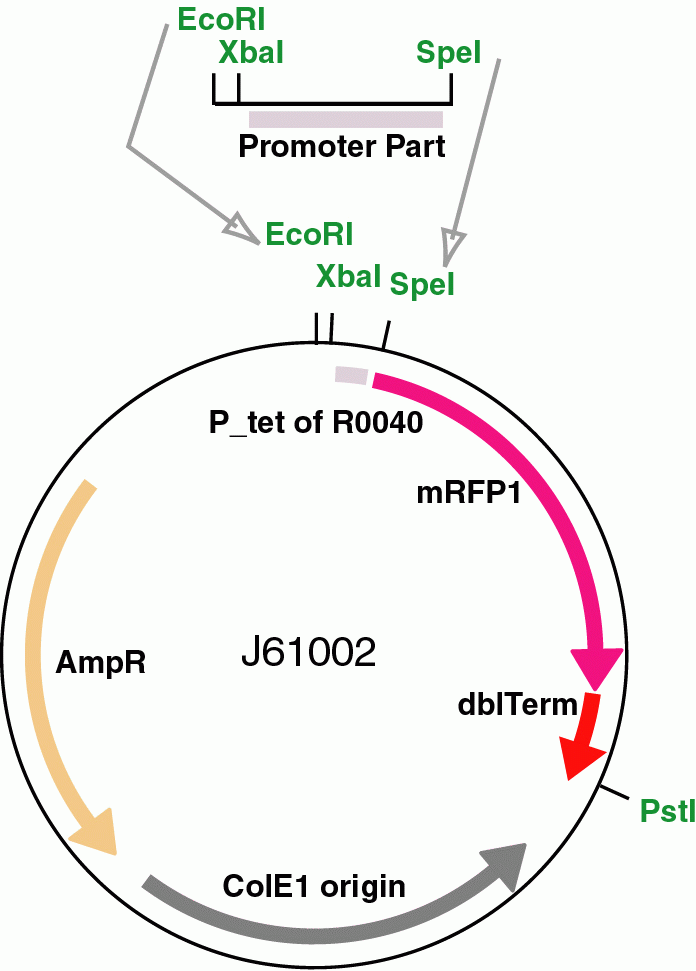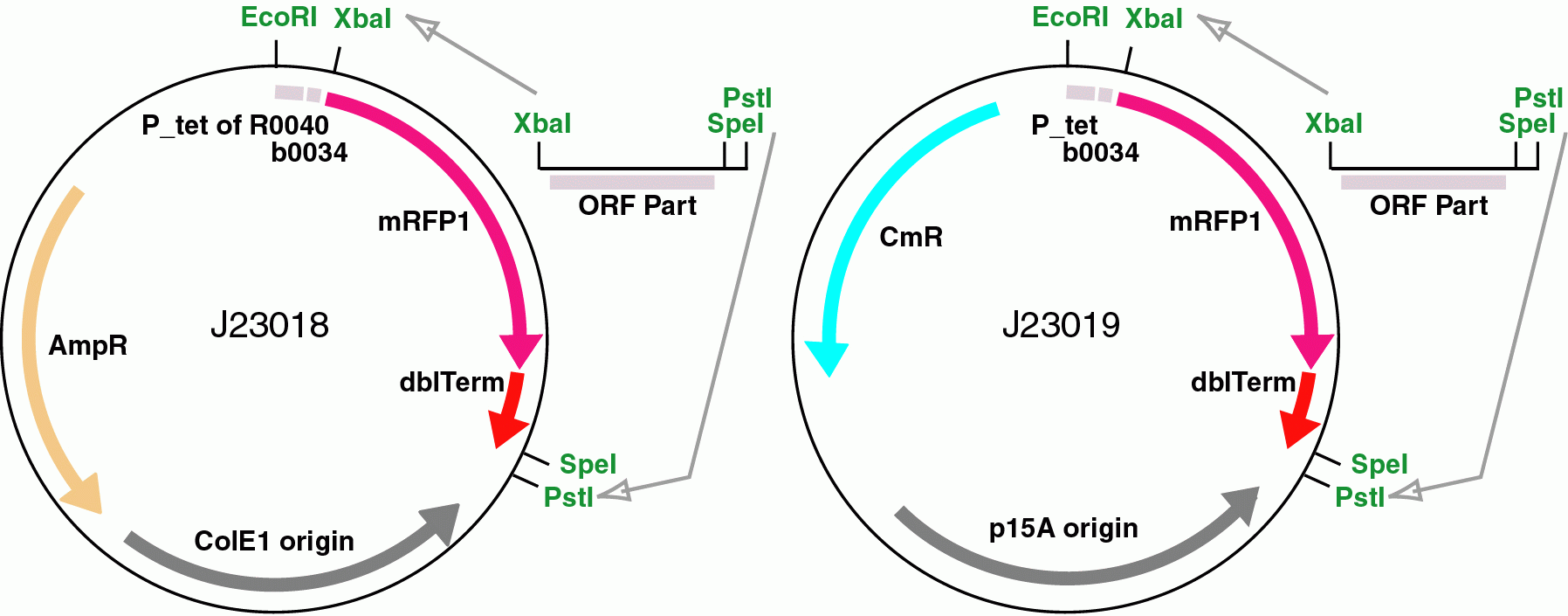Berkeley2006-PlasmidPartsMain
From 2006.igem.org
Implementatin of these experiments required the development of new Biobrick-compatible plasmid parts for constructing two-plasmid systems in E. coli and making basic parts.
The combination of a p15A and a colE1 origin of replication plasmid is the most common two-plasmid system for use in E. coli. The pSB1A* series of plasmids contain the colE1 plasmid and cannot be co-maintained at stable copy numbers in combination due to plasmid incompatibility. Here, two plasmids in the same cell with origins from the same incompatibility group compete for replication machinery, resulting in unpredictable copy number and often the exclusion of one of the plasmids. This is circumvented by cotransforming plasmids with origins from distinct incompatibility groups. Since no p15A origin plasmid was present in the Registry, we developed part J23001, or pSB3C6 for our studies. This plasmid was used for all our riboregulator experiments for the locked-RFP reporter. Shown here is the variant of the plasmid containing part J01022.
Plasmids for constructing basic Biobrick parts
One difficulty in the construction of basic biobrick parts is the absence of a phenotype without additional parts. To observe the activity of a part, one must therefore construct a composite part in addition to the basic part. This is particularly problematic when parts are identified from combinatorial libraries, where the basic part cannot be simply reconstructed from the materials used to make the composite part library. As a simplification to constructing basic parts, we have made a series of plasmids that retains the proper positioning of the XbaI and SpeI restriction sites flanking basic parts while allowing the introduction of the additional elements necessary to observe their activity.
Part J23006 is a pSB1A2-derived plasmid for constructing basic biobrick parts under the control of an external promoter. Insertion of parts such as a protein generator or a RNA key between the XbaI and SpeI (or) PstI sites places the part under the control of the part r0040 Tet promoter. The resulting plasmid retains the normal sequence context of a r0040.newpart composite with one point mutation changing the ACTAGA linker to TCTAGA. We have used this plasmid extensively to express RNA keys.
Plasmid J61002, like J23006, is a pSB1A2-derived plasmid for constructing basic biobrick promoter parts. When new promoters or libraries of promoters are placed within the XbaI and SpeI sites, they control the expression of RFP while retaining their ability to be used in Biobrick standard assembly. This plasmid was used for the construction of our constitutive promoter library.
Plasmids J23018 and J23019 allow the construction of open reading frame basic parts while allowing their constitutive expression on a colE1 or p15A origin of replication, respectively.
Next Section: Logic Computation in Cellular Networks



